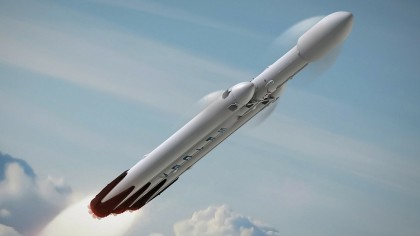Could an old Boeing 747 give everyone on the planet access to the internet?
LauncherOne rocket will launch from an old Virgin Atlantic plane to put CubeSats into orbit

Could an old Boeing 747 really give everyone on the planet access to the internet? That's the impetus behind a move by Virgin Galactic to kick-start a new small satellite launch service using a rocket that launches from under the wing of a retiring commercial aircraft.
When the Telstar 1 satellite was launched in 1962 purely to broadcast TV signals across the Atlantic, it begun a communications revolution. Now over 2,000 satellites handle TV, imaging, weather, Earth observations and, of course, GPS and navigational data for ships, vehicles and phones. But at £50 million per launch, satellites are out of reach of most companies.
That all changes with CubeSats - miniaturised, modular and open-source satellites can be as small as 10x10x10cm. But how do you launch them?
"We noticed an odd disconnect between the satellites getting smaller and the rockets getting bigger," says Will Pomerantz, Vice President, Special Projects of Virgin Galactic.
"Even companies that are doing wonderful things to bring down the cost-per-kilogram of getting to space are doing so by building larger and larger rockets." SpaceX began by flying a US$6 million rocket, and they retired that in favour of a US$12 million rocket, moved to a US$50 million rocket, and are now working on Falcon Heavy, a US$85 million (at least) rocket.

"So there's an opportunity for Virgin Galactic to do something to help the global community and generate revenue," says Pomerantz. "LauncherOne is custom-built for launching smaller satellites, from 300kg down to 2kg, in to 500-700km orbits."
Winging-it to space
Virgin Galactic isn't the only company winging-it to space. At first glance, the LauncherOne system looks almost identical to Pegasus, an air-launched rocket developed by Orbital ATK (which just launched a cargo missions the International Space Station) that also take payloads to space from a Lockheed martin L-1011 aircraft.
Sign up for breaking news, reviews, opinion, top tech deals, and more.
"Pegasus is a great vehicle, but though it started out as a low-cost vehicle with initial flights costing US$6 million, the one NASA bought recently cost about US$50 million," says Pomerantz, who thinks that Pegasus is a rocket now designed almost exclusively for NASA.
"It's been a long time since anyone else other than NASA flew on it – a lot of our customers are entrepreneurial firms with much more modest budgets, so low-cost is a top priority for them." For that same US$50 million, companies could launch their small satellites (typically for telecoms, Earth-observing, ship and asset tracking, or looking for asteroids) from LauncherOne three, four or even five times.

However, LauncherOne still won't be the cheapest way to put a CubeSat into space. That will always be piggy-backing or hitch-hiking, where a company or government launching a huge satellite by rocket will sell off spare capacity on that launch extremely cheaply.
"That will always be the cheapest way, but you have no control over timing, the launch location, or on what orbit you get dropped-off on," says Pomerantz. "They're hard to build a business plan around." It's also impossible to launch a constellation of satellites that way – and that's precisely what the trend is for in the CubeSat industry. Cue LauncherOne.

Jamie is a freelance tech, travel and space journalist based in the UK. He’s been writing regularly for Techradar since it was launched in 2008 and also writes regularly for Forbes, The Telegraph, the South China Morning Post, Sky & Telescope and the Sky At Night magazine as well as other Future titles T3, Digital Camera World, All About Space and Space.com. He also edits two of his own websites, TravGear.com and WhenIsTheNextEclipse.com that reflect his obsession with travel gear and solar eclipse travel. He is the author of A Stargazing Program For Beginners (Springer, 2015),